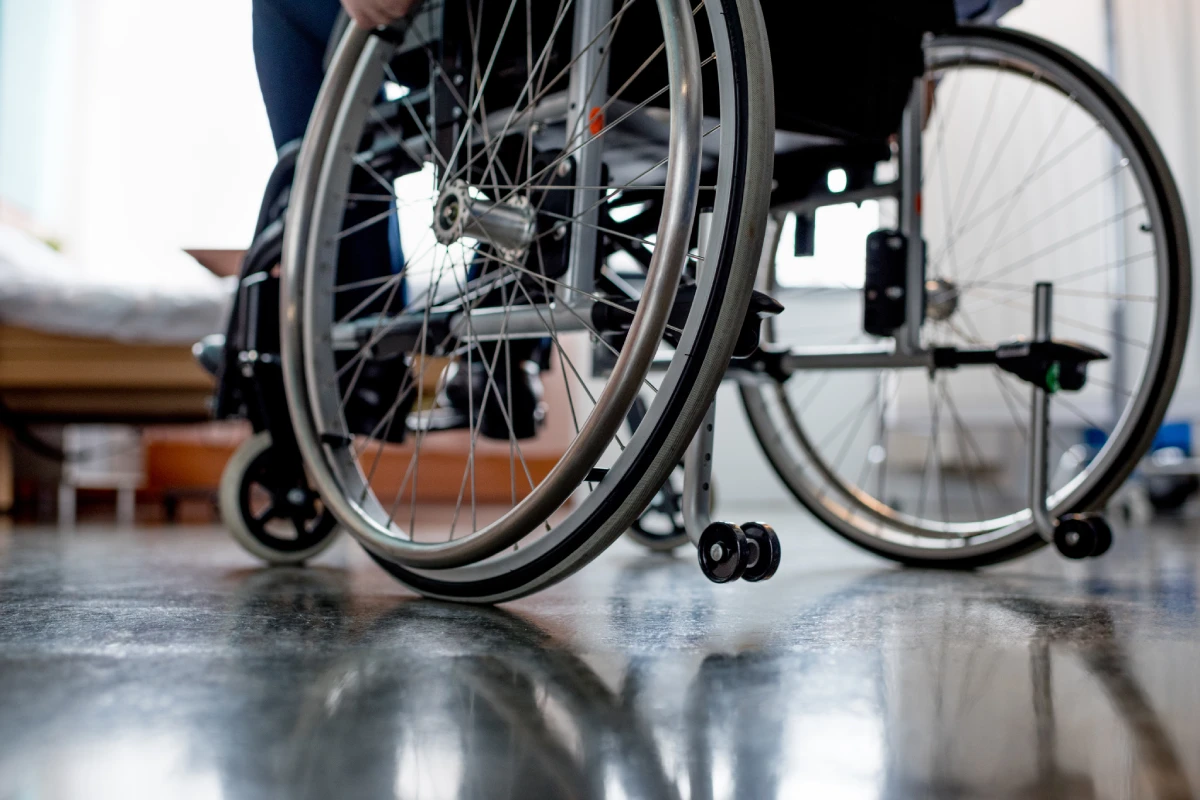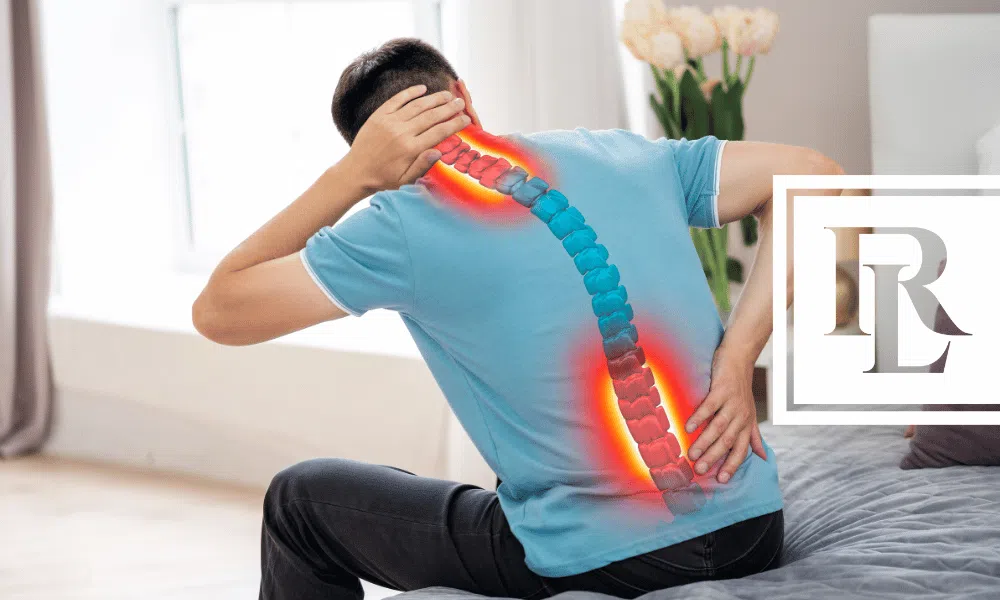NEED HELP UNDERSTANDING HOW IMPAIRMENTS EFFECT YOUR SOCIAL SECURITY BENEFITS? GET AN ATTORNEY
The Social Security rules require that complaints of severe pain be confirmed by objective testing. X-rays, MRI’s and CT scans are helpful in identifying abnormalities in your spine. Examination findings by your doctor also help establish disabling lower back pain. Social Security has created a medical listing of impairments for various diagnoses, and if your impairment meets or equals the requirements of a Listing, then you will be found disabled.
COMMON IMPAIRMENTS & HOW THEY AFFECT YOUR SOCIAL SECURITY BENEFITS
There are a number of common impairments that may affect your Social Security benefits including lower back pain, fibromyalgia, bipolar disorder, anxiety, and diabetes to name a few. In this section, we help you understand the level of impairment, the Social Security rules, and what types of findings and evidence need to be presented.
LOWER BACK PAIN
People with lower back pain often have difficulties sitting, standing, and walking for long periods of time. Disorders of the spine (e.g., herniated nucleus pulposus, foraminal stenosis, spinal arachnoiditis, spinal stenosis, osteoarthritis, degenerative disc disease, facet arthritis, ankylosing spondylitis, vertebral fracture), resulting in compromise of a nerve root (including the cauda equina) or the spinal cord, with:
- Evidence of nerve root compression characterized by neuro-anatomic distribution of pain, limitation of motion of the spine, motor loss (atrophy with associated muscle weakness or muscle weakness) accompanied by sensory or reflex loss and, if there is involvement of the lower back, positive straight-leg raising test (sitting and supine); or
- Spinal arachnoiditis, confirmed by an operative note or pathology report of tissue biopsy, or by appropriate medically acceptable imaging, manifested by severe burning or painful dysesthesia, resulting in the need for changes in position or posture more than once every 2 hours; or
- Lumbar spinal stenosis resulting in pseudoclaudication, established by findings on appropriate medically acceptable imaging, manifested by chronic nonradicular pain and weakness, and resulting in the inability to ambulate effectively.
Only the most severe cases meet or equal a Listing. If your medical condition does not meet or equal the Listing, then you can still be found disabled in a Social Security disability or SSI claim. Social Security is required to consider pain and the limitations brought on by your pain when deciding your claim. However, pain is subjective. Two different people with identical objective findings can have wide-varying tolerances to pain, and consequently, very different resulting limitations. The starting point to establish a disabling lower back impairment is the diagnosis. The Social Security rules require that you have a medically determinable impairment. This means a medical professional has to formulate a diagnosis based on medically acceptable clinical and laboratory diagnostic techniques. In pain cases, the medically determinable impairment must be reasonably expected to produce severe pain alleged.
Social Security will evaluate the intensity, persistence, and functionally limiting effects of your pain. Factors relevant to your symptoms will be taken into account, including: your daily activities; the location, duration, frequency, and intensity of your pain or other symptoms; precipitating and aggravating factors; the type, dosage, effectiveness, and side effects of any medication you take or have taken to alleviate your pain or other symptoms; treatment, other than medication, you receive or have received for relief of your pain or other symptoms; any measures you use or have used to relieve your pain or other symptoms.
FIBROMYALGIA
People with fibromyalgia experience widespread pain and tenderness in the joints, muscles, tendons, and other soft tissues. Most people with fibromyalgia also suffer from fatigue, depressed mood, and sleep problems. The cause of fibromyalgia is unknown. Fibromyalgia cases are challenging because the diagnosis is generally given only after everything else has been ruled out, and the symptoms are largely subjective. This undercuts Social Security’s requirement that you have a medically determinable impairment. However, Social Security has adopted the criteria issued by the American College of Rheumatology (ACR) to determine if your condition satisfies the medically determinable impairment requirement. According to ACR, a diagnosis of fibromyalgia is proper for patients who have chronic widespread pain, and tender point sites in eleven (11) of eighteen (18) tender points areas of the body.
If your fibromyalgia has not been diagnosed by a specialist in Rheumatology, then it is a good idea to consult one. A diagnosis by a specialist strengthens your claim. Like other pain diagnoses, Social Security will evaluate the effects of your pain and factor relevant to your symptoms into account, like, your daily activities, the location, duration, frequency, and intensity of your pain or other symptoms, precipitating and aggravating factors, as well as:
- the type, dosage, effectiveness, and side effects of any medication you take or have taken to alleviate your pain or other symptoms
- treatment, other than medication, you receive or have received for relief of your pain or other symptoms
- any measures you use or have used to relieve your pain or other symptoms (e.g., lying flat on your back, standing for 15 to 20 minutes every hour, sleeping on a board, etc.)
- other factors concerning your functional limitations and restrictions due to pain or other symptoms
BIPOLAR DISORDER
Bipolar disorder is a psychiatric condition that produces extreme highs and extreme lows in your mood. During periods of extreme highs (called mania), symptoms can include rushed speech, short attention span, impulsiveness, and racing thoughts. People experiencing mania often engage in reckless behavior such as binge eating, promiscuity, and spending sprees. When people with bipolar disorder are low, they become extremely depressed. They have difficulty concentrating, remembering or making decisions, feel worthless, hopeless or guilty, and pull away from friends or activities they once enjoyed. Bipolar disorder usually starts between ages 15-25 and affects men and women equally. It is not uncommon for people who have not yet been diagnosed to self-medicate with drugs and alcohol. The cause of bipolar disorder is not known but there appears to be a genetic component. Treatment typically includes prescription mood stabilizers and psychotherapy. Social Security has established a Listing for bipolar disorder in the Mental Disorders section of the Listing of impairments. Bipolar syndrome with a history of episodic periods manifested by the full symptomatic picture of both manic and depressive syndromes (and currently characterized by either or both syndromes).
Medically documented persistence, either continuous or intermittent, of one of the following: depressive syndrome characterized by at least four of the following: anhedonia or pervasive loss of interest in almost all activities; appetite disturbance with change in weight; sleep disturbance; psychomotor agitation or retardation; decreased energy; feelings of guilt or worthlessness; difficulty concentrating or thinking; thoughts of suicide; hallucinations, delusions, or paranoid thinking; and
Manic syndrome characterized by at least three of the following: hyperactivity; pressure of speech; flight of ideas; inflated self-esteem; decreased need for sleep; easy distractibility; involvement in activities that have a high probability of painful consequences which are not recognized; hallucinations, delusions or paranoid thinking.
Resulting in at least two of the following: marked restriction of activities of daily living; marked difficulties in maintaining social functioning; marked difficulties in maintaining concentration, persistence, or pace; repeated episodes of decompensation, each of extended duration; OR medically documented history of a chronic affective disorder of at least 2 years’ duration that has caused more than a minimal limitation of ability to do basic work activities, with symptoms or signs currently attenuated by medication or psychosocial support, and one of the following: repeated episodes of decompensation, each of extended duration; a residual disease process that has resulted in such marginal adjustment that even a minimal increase in mental demands or change in the environment would be predicted to cause the individual to decompensate; or current history of 1 or more years’ inability to function outside a highly supportive living arrangement, with an indication of continued need for such an arrangement.
ANXIETY
Anxiety is a psychiatric impairment that produces feelings of fear and concern. Some symptoms commonly associated with anxiety include: excessive and ongoing worry and tension, an unrealistic view of problems, irritability, difficulty concentrating, trouble sleeping, and restlessness. A combination of medication and psychotherapy is the typical treatment for anxiety. Social Security has a Listing for anxiety: In these disorders anxiety is either the predominant disturbance or it is experienced if the individual attempts to master symptoms; for example, confronting the dreaded object or situation in a phobic disorder or resisting the obsessions or compulsions in obsessive-compulsive disorders.
The required level of severity for these disorders is met when the requirements in both A and B are satisfied, or when the requirements in both A and C are satisfied.
- Medically documented findings of at least one of the following:
- Generalized persistent anxiety accompanied by three out of four of the following signs or symptoms:
- Motor tension; or
- Autonomic hyperactivity; or
- Apprehensive expectation; or
- Vigilance and scanning; or
- A persistent irrational fear of a specific object, activity, or situation which results in a compelling desire to avoid the dreaded object, activity, or situation; or
- Recurrent severe panic attacks manifested by a sudden unpredictable onset of intense apprehension, fear, terror and sense of impending doom occurring on the average of at least once a week; or
- Recurrent obsessions or compulsions which are a source of marked distress; or
- Recurrent and intrusive recollections of a traumatic experience, which are a source of marked distress; AND
- Generalized persistent anxiety accompanied by three out of four of the following signs or symptoms:
- Resulting in at least two of the following:
- Marked restriction of activities of daily living; or
- Marked difficulties in maintaining social functioning; or
- Marked difficulties in maintaining concentration, persistence, or pace; or
- Repeated episodes of decompensation, each of extended duration. OR
- Resulting in a complete inability to function independently outside the area of one’s home.
DIABETES
Diabetes mellitus (DM) disrupts the production of several hormones, including insulin, that regulate metabolism and digestion. Insulin is essential to the absorption of glucose from the bloodstream into body cells for conversion into cellular energy. There are two major types of DM: type 1 and type 2. Both type 1 and type 2 DM are chronic disorders that can have serious disabling complications that meet the duration requirement.
Type 1 DM—previously known as “juvenile diabetes” or “insulin-dependent diabetes mellitus” (IDDM)—is an absolute deficiency of insulin production that commonly begins in childhood and continues throughout adulthood. Treatment of type 1 DM always requires lifelong daily insulin. With type 2 DM—previously known as “adult-onset diabetes mellitus” or “non-insulin-dependent diabetes mellitus” (NIDDM)—the body’s cells resist the effects of insulin, impairing glucose absorption and metabolism. Treatment of type 2 DM generally requires lifestyle changes, such as increased exercise and dietary modification, and sometimes insulin in addition to other medications.
While both type 1 and type 2 DM are usually controlled with medication, diet, and exercise, some individuals simply do not achieve good control. Uncontrolled DM can result in long-term complications which can affect various body systems. For example, diabetic peripheral neurovascular disease can lead to gangrene and subsequent amputation of an extremity. Diabetic retinopathy affects your vision. Diabetic gastroparesis can lead to abnormal gastrointestinal motility. Diabetic nephropathy can affect your kidney function, and diabetic peripheral and sensory neuropathies can affect the use of your extremities.





